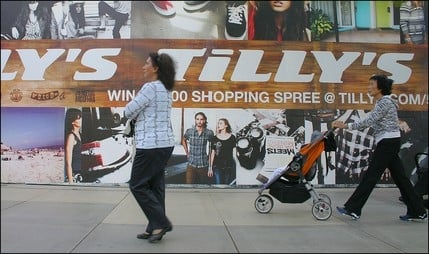
CITY HALL — Lighting. Traffic. Parking.
It sounds like a laundry list of resident concerns, but a presentation by Santa Monica’s four Business Improvement Districts before the City Council Tuesday hit all of the same notes, underscoring the tight relationship between quality of life for citizens and the businesses that serve them.
Leaders of the BIDs from Downtown, Main Street, Pico Boulevard and Montana Avenue came to speak to the council with a united voice, asking for help with common goals like streamlining processes and help navigating the requirements of City Hall, but also for support for ideas individual to each of the BIDs.
All shared five common points, specifically requests for help navigating the complexities of City Hall, streamlining some city processes, increasing the number of events co-sponsored with City Hall, walk throughs of business districts with city staff and the creation of a shuttle between the incoming light rail and the various districts.
There were, however, requests with more individual flavor.
The Montana Avenue Merchants Association, represented by Mark Wain of the Luxxe Café kicked off the presentations, underscoring decaying infrastructure, a lack of parking for employees and patrons and concerns about traffic safety.
The Pico Improvement Organization, represented by Robert Kronovet, called for help to create pocket parks and public art spaces to beautify the neighborhood and cement its place as an art district in Santa Monica.
Gary Gordon of the Main Street Business Improvement Association asked for help with pedestrian safety, specifically pointing out the need for crosswalks to break up large blocks and changes in the code to allow additional restaurants to start up in his district.
Finally, Kathleen Rawson of Downtown Santa Monica Inc. told council members about her district’s need for improved wayfinding and other infrastructure to help visitors, as well as a general commitment to maintain projects and improvements already in place.
Parking. Lighting. Infrastructure.
The common themes of the requests surprised Mayor Pro Tem Gleam Davis, who hadn’t expected so much overlap between the needs of businesses and those of residents.
“Knowing that it’s an issue for everyone, we can approach it from a more holistic perspective,” Davis said.
Davis requested the forum during the budget review in late May to give the business community a forum to express their needs and concerns in a complete way rather than bringing individual issues before council one meeting at a time.
“It’s hard to get things done in that way,” Davis said. “Having an evening where businesses could come to us and tell us what’s on their mind was much more efficient.”
City Manager Rod Gould thanked the BIDs for their presentation, but also sounded a cautionary note.
Santa Monica is in the midst of a building boom, with large projects like the Exposition Light Rail stations, Colorado Esplanade, Palisades Garden Walk Park and implementation of the Bicycle Master Plan all set for the next several years.
Planners are working “flat out,” Gould said, to make sure that those projects come online in a timely manner.
At the same time, the millions of dollars needed to fund those projects is in jeopardy pending a California Supreme Court decision expected in January on whether or not Gov. Jerry Brown had the authority to take $1.7 billion from redevelopment agencies across the state.
With that in mind, Santa Monica’s coffers are tapped out, he said, and large infrastructure projects beyond those already underway are beyond the realm of possibility for the time being.
“Rod was absolutely on point in the ways that he presented some of the concerns,” said Laurel Rosen, president of the Santa Monica Chamber of Commerce. “Having said that, there’s definitely some opportunity on issues for movement.”
Supporting the businesses in their goals will ultimately serve both City Hall and the rest of the community, she said.
“It’s really a simple equation,” Rosen said. “Business dollars equal money in the general fund, which equals a healthy, thriving community.”
If, for the time being, large projects like expensive lighting and other things are out of the city’s reach, perhaps low hanging fruit like a change in code to allow additional restaurants on Main Street.
“Tuesday night was a first step to really hear about it. What are the issues, what do we need to solve,” Davis said. “We got a comprehensive list and good direction from council.”
The opinions voiced at the meeting may not impact how City Hall can allocate large amounts of resources, but it can at least help prioritize projects already in the works to maximize the benefits to business and residents, Davis said.
ashley@www.smdp.com








